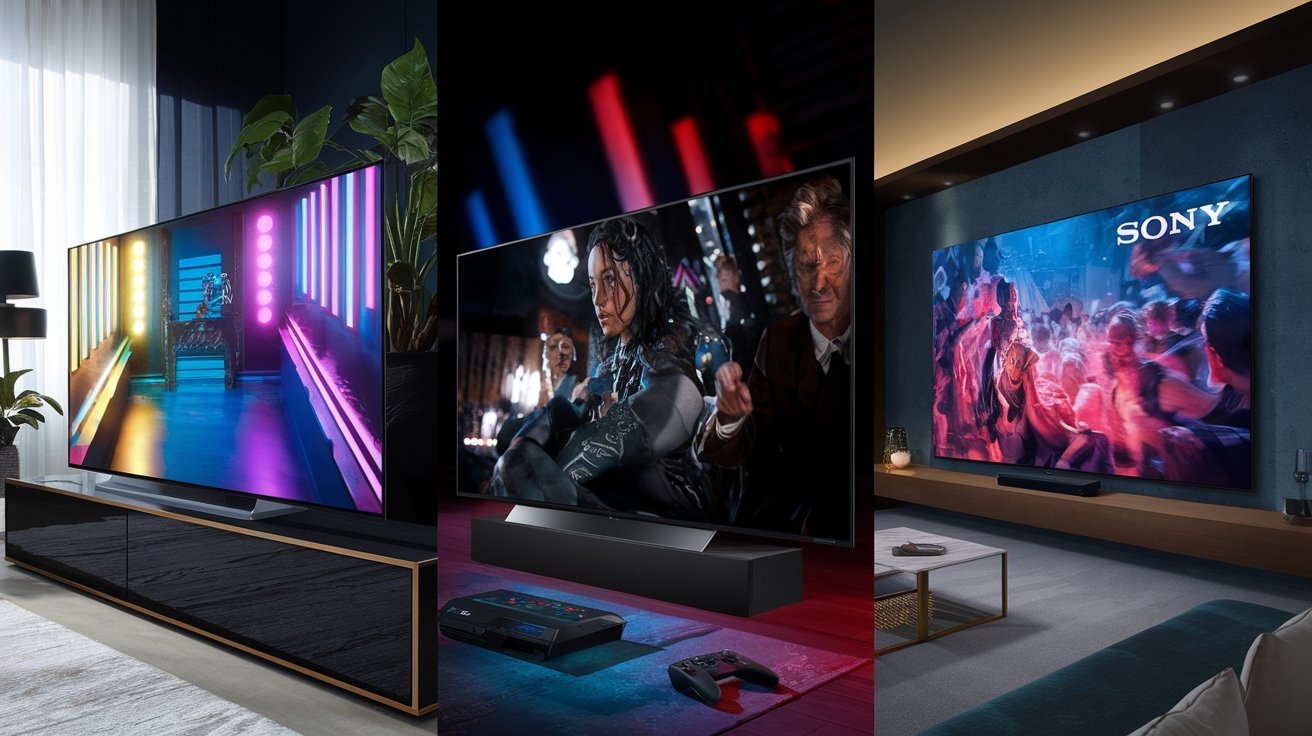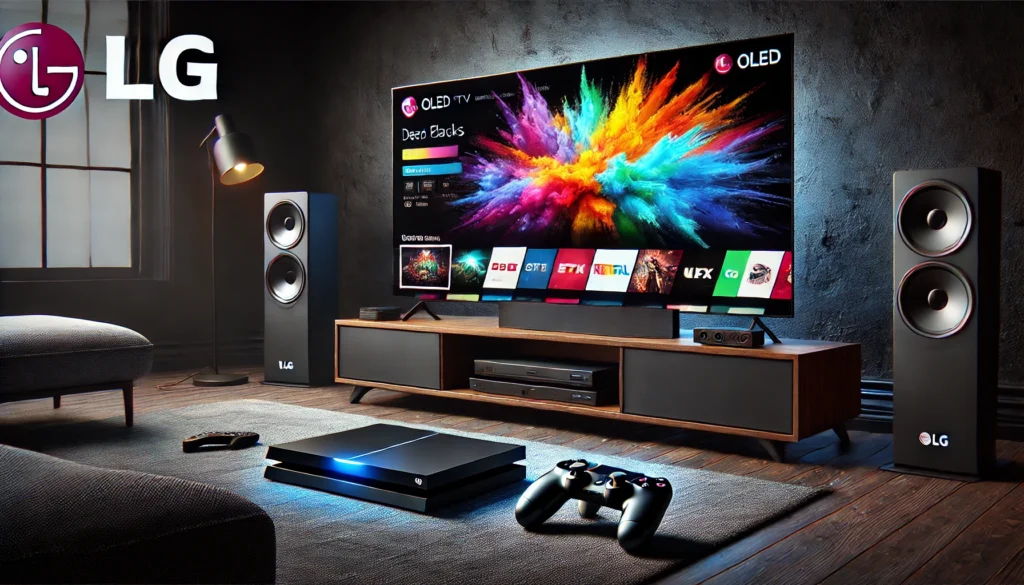Physical Address
KM 21 Aba/PH Express Way Oyigbo Portharcourt Nigeria.
Physical Address
KM 21 Aba/PH Express Way Oyigbo Portharcourt Nigeria.

The best Blog and product review Site

The best Blog and product review Site

OLED TVs provide an immense viewing experience that’s hard to beat. Each brand excels in different areas, but all deliver the core advantages of OLED technology

1. LG OLED TVs: The OLED Pioneer
Key Features:
OLED Evo Technology: LG’s latest OLED panels (Evo) improve brightness while maintaining the perfect blacks OLEDs are known for.
Wide Viewing Angles: LG OLEDs provide consistent picture quality even when viewed from sharp angles.
Smart TV Platform (webOS): The webOS platform is intuitive and user-friendly, offering access to popular streaming services and apps.
Gaming Features: LG OLED TVs are a favorite for gamers because they support HDMI 2.1, VRR (Variable Refresh Rate), ALLM (Auto Low Latency Mode), and G-Sync/FreeSync compatibility.
AI-Powered Image and Sound: AI-driven features automatically adjust the picture and sound for optimal real-time performance.
What Makes LG Stand Out:
Innovation Leader: As one of the first brands to introduce OLED, LG’s experience and continuous improvements make their models some of the most reliable and cutting-edge.
Perfect for Gamers: LG OLED TVs’ advanced gaming features and low input lag make them the go-to choice for serious gamers.
Price Range:
LG C3 OLED: $1,500 – $3,500 (depending on size).
LG G3 OLED: $2,500 – $6,000 (depending on size and features).
Pros:
– Perfect blacks and infinite contrast.
– Wide viewing angles.
– Fast response times, ideal for gaming.
AI-enhanced picture and sound.
Cons:
Lower peak brightness compared to other brands.
Extended exposure to static images poses a burn-in risk, although newer models have reduced this concern.

2. Samsung OLED TVs: The Quantum Dot Game-Changer
Key Features:
QD-OLED Technology: Samsung’s OLED TVs use Quantum Dot technology on top of the OLED panel, offering brighter images and more vivid colors.
Brightness: Samsung’s QD-OLED technology helps their TVs stand out in bright rooms, offering some of the highest brightness levels in OLED Technology.
Design: Samsung is known for sleek, ultra-thin, bezel-less designs, which give its OLEDs a premium aesthetic.
Smart TV Platform (Tizen OS): Tizen is Samsung’s proprietary innovative platform. It’s easy to navigate and smooth and supports many apps.
Gaming and Performance: Samsung’s OLEDs support 4K at 120Hz, VRR, and low input lag, making them competitive in gaming.
What Makes Samsung Stand Out:
QD-OLED Brilliance: The Quantum Dot layer enhances brightness and color performance, making Samsung OLEDs some of the most vibrant on the market.
High Brightness for Bright Rooms: Samsung OLEDs excel in bright environments where others might struggle with glare.
Price Range:
Samsung S90C OLED: $2,000 – $3,800 (depending on size).
Samsung S95C OLED: $2,500 – $5,000 (depending on size and specs).
Pros:
– High peak brightness levels, excellent for bright rooms.
– Vivid and accurate colors thanks to Quantum Dot technology.
– Sleek, modern designs.
– Great for gaming with HDMI 2.1 support.
Cons:
– More expensive than some competitors.
– Viewing angles can be more limited compared to LG.
– Tizen OS has a learning curve compared to other smart TV platforms.

3. Sony OLED TVs: The Cinema Enthusiast’s Dream
Key Features:
Cognitive Processor XR: SonySony’s most advanced processor mimics human perception to optimize images, making colors, motion, and details look more natural and realistic.
Acoustic Surface Audio: Sony OLEDs use the entire screen to emit sound, providing a more immersive and direct audio experience that comes from the screen itself.
Picture Quality: With support for Dolby Vision, HDR10, and IMAX Enhanced, Sony OLED TVs are perfect for movie lovers who crave cinematic experiences at home.
Filmmaker Mode: Optimizes picture settings to display content as creators intended, especially in movies.
What Makes Sony Stand Out:
Superior Image Processing: SonySony’s Native Processor XR analyzes the picture in real time, adjusting brightness, colors, and contrast to deliver lifelike visuals.
Audio from the Screen: With Acoustic Surface Audio, Sony OLEDs eliminate the need for external speakers, making the sound seem as if it is directly from the characters on screen.
Price Range:
Sony A80L OLED: $1,800 – $4,000 (depending on size).
Sony A95L OLED: $2,500 – $6,000 (depending on size and features).
Pros:
Top-tier image processing, resulting in lifelike picture quality.
Best-in-class sound quality thanks to Acoustic Surface Audio.
Perfect for movie enthusiasts with Dolby Vision and IMAX support.
Excellent for gaming, with HDMI 2.1 support.
Cons:
– Expensive, especially the flagship models.
– Lower peak brightness than SamsSamsung’sDs.
– Limited app support compared to LG and SamsSamsung’srt platforms.
Which OLED TV Should You Buy?
Choosing between LG, Samsung, and Sony depends on your priorities:
For gamers: LG OLEDs are your best bet, thanks to their gaming-focused features like low input lag, VRR, and wide viewing angles. The LG C3 and G3 models offer an outstanding balance of performance and price.
For bright rooms: SaSamsung’s D-OLED TVs excel in environments with a lot of natural light. Their high brightness and vivid colors make the Samsung S95C and S90C great for watching during the day or in well-lit spaces.
For movie lovers, Sony OLED TVs provide a cinematic experience with superior sound and image quality optimized for watching movies. The Sony A95L delivers an unparalleled home theater experience with features like Dolby Vision and Acoustic Surface Audio.
Final Verdict
LG OLED TVs are ideal if you have reliable gaming performance and wide viewing angles.
Samsung OLED TVs provide the best color accuracy and brightness, making them suitable for brightly lit rooms.
Sony OLED TVs stand out for those who want premium sound and picture quality, especially for movie and home theater setups.
No matter which brand you choose, an OLED TV will provide an immersive viewing experience that’s hard to beat. Each brand excels in different areas, but all deliver the core advantages of OLED technology—perfect blacks, vibrant colors, and stunning contrast. Whether you prioritize gaming, cinematic quality, or brightness, there’s an OLED TV for everyone.